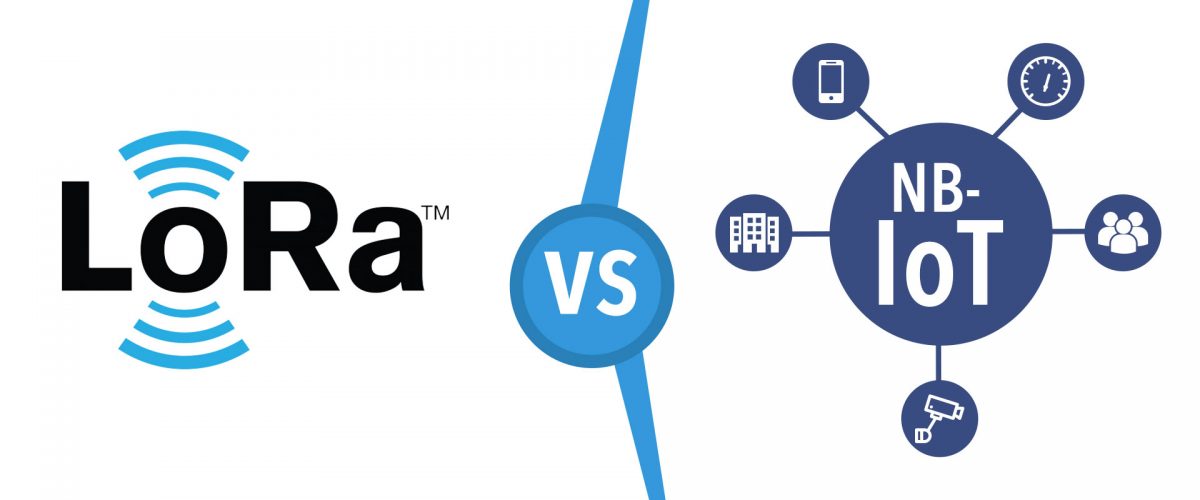Technical comparison of NB-IOT and LoRa
LPWAN (low-powerWide-AreaNetwork, low-power wide area network) has rapidly emerged in recent years. NB-IoT and LoRa are typical representatives among them, and also the two most promising low-power wide area network communication technologies. So which is better, NB-IOT or LoRa IoT long-distance low-power wireless technology?
NB-IoT technology has four major advantages:
One is the wide coverage. The coverage of NB-IoT is 20 db better than the traditional GSM network. If calculated according to the coverage area, a base station can provide 10 times the coverage area; second, it can support massive connections, at a frequency of 200KHz, a base station can provide 100,000 connections with the help of NB-IoT; third, low power consumption, NB-IoT communication The modular battery can work independently for ten years without charging; the fourth is low cost, and the target of the NB-IoT module is less than 5 dollars.
The main technical feature of LoRa is that it can carry out long-distance transmission of 1-20km. In cities, the wireless distance ranges from 1 to 2 kilometers, and in suburbs or open areas, the wireless distance can reach up to 20km. The number of nodes can reach tens of thousands or even millions, and how many nodes or terminal devices can be connected to a gateway. The data rate range is 0.3~50kbps, and the lower data rate can make the battery life up to 3-10 years. Therefore, if you compare technically, it is difficult to say which technology has absolute advantages. The biggest difference between the two lies in whether it works on authorized spectrum and other aspects.
Licensed spectrum
If you use NB-IoT technology for Internet of Things applications, it will be subject to the network coverage of telecom operators, just like the current GPRS data transmission module or LTE Internet of Things terminals, if your Internet of Things applications are in remote suburbs or In mountainous areas, if there are no base stations that support NB-IOT, the Internet of Things access based on NB-IOT will not be successfully implemented.
While LoRa works on an unauthorized Sub-GHZ channel, we can use SemTech’s LoRa module and LoRa gateway to build the network by ourselves, without relying on the base station signal coverage of the mobile network, and without paying operators for network traffic usage fees. Although LoRa works in unlicensed spectrum, the channel may be interfered by other wireless communication applications, but LoRa technology is based on linear Chirp spread spectrum modulation, and its technology has been applied in military and aerospace communications for decades. We can Don’t worry too much about LoRa’s anti-interference ability.
In terms of power consumption, whether it is NB-IOT or LoRa, they are designed with low power consumption to meet the requirements of the meter, and they have a 10-year lifespan, but the specific details have not been explained in detail. In terms of the cost of the module, it is understood that the NB-IOT chip will be about 2 US dollars, while the LoRa will not be higher than 5 US dollars. The later maintenance is easy, so it is a little bit on the existing basis. The modification will still be based on a new charging method that is currently not specific.
In terms of security, NB-IOT technology can achieve a carrier-grade security index, using 3GPP authorized spectrum to avoid interference problems. And LoRa uses a multi-layer encryption method, and the ISM unlicensed spectrum will cause interference problems. In terms of sensitivity and accuracy, the link budgets of both technologies are above 155dB, which is completely fine for accuracy and sensitivity. (In order to effectively compare the performance of the transmission range between different technologies, a quantitative indicator called “link budget” is used. The link budget includes every variable that affects the signal strength of the receiving end. In its simplified system, it includes transmit power plus Receiver sensitivity).
In terms of coverage (signal), NB-IOT<25km and LoRa<11km are slightly inferior to LoRa. NB-IOT can repeat transmission when the signal is bad. For the meter installation environment, NB-IOT technology has been successfully implemented in the water meter industry, and LoRa is also possible in the face of harsh environments. In terms of network deployment, LoRa is currently a bit embarrassing, and a strong hand is needed to promote its network construction, and NB-IOT can be based on LTEFDD or GSM upgrades or new builds.

